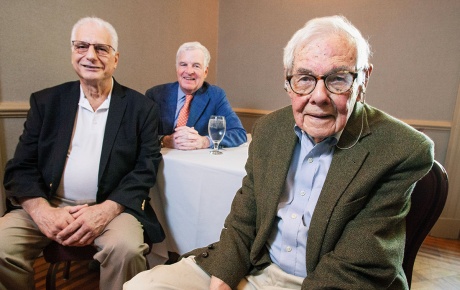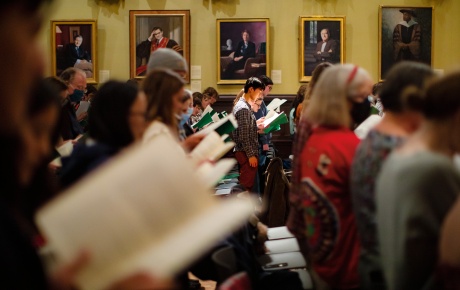One hundred years ago, a meeting of class secretaries was called by then-President William Herbert Perry Faunce, class of 1880. Faunce was looking for opinions on how the University could better keep in touch with its alumni. The idea of an alumni publication came up, and Faunce and the secretaries did what such groups do best: they set up a committee.
The eventual result was the publication of the first issue of the Brown Alumni Monthly in June 1900. Reading the first BAM today, one is struck by the continuing relevance of much of its subject matter, which included class notes ("C.C. Luther '71 has been conducting revival services in Newark, N.J."), obituaries, campus news, and a great deal of writing about a persistent theme: Brown's need to raise more money. An anonymous writer (probably editor Henry R. Palmer, class of 1890) raises the question: "Is there too keen a rivalry among our universities?" The essay's pleading, if fraternal, tone raises a series of questions that President E. Gordon Gee and the Brown Corporation are asking themselves as urgently at the outset this new century: "Is it necessary to cast a jealous eye around, and cherish the apprehension that some other college will get ahead of us because of its more abundant resources?"
The answers haven't changed. "What Brown needs sorely," the writer concludes, "is more roofs to shelter her ever increasing student family. There must be new class rooms, new dormitory accommodations, better faculty salaries." (Faculty take note.)
Over the year ahead, we will be returning often to examine the University and its alumni as depicted through the editorial and visual lens of the magazine. The highlight of this endeavor will be an upcoming issue devoted to the BAM 100: the hundred alumni who have had the largest impact - for good or ill - on the world over the past century.
How will we select the BAM 100? The process is spelled out more fully in the notice on page 75 of this issue, but it begins with your nominations. Send us the names of one or more Brown alumni who fit the description above and convince us why they should be included.
All alumni are eligible, whether they attended as undergraduate or graduate students, and even if, as in a few famous cases, the alumnus or alumna never quite finished the degree. Send us faculty and administrative nominations if you wish as well; if we receive enough of them, we may include a smaller listing of these groups in the BAM 100 issue. The final names will be selected by a committee (some things never change) of alumni, faculty, and administrators appointed by the independent BAM board of editors.
Now for the disclaimer: The eventual list will reflect the unique perspective of the magazine as it has evolved through the years. If asked, other groups and administrative offices at the University might well come up with a very different set of profiles. Our intention is not to be definitive; it is to recognize the meaningful accomplishments of the University's graduates while opening up a conversation about the values Brown has promoted in its alumni. We hope to get people talking about what it means to be a graduate of Brown.
Send your nominations to:
BAM 100
Brown Alumni Magazine
Box 1854
Providence, R.I. 02912
Or send them by e-mail to [email protected]; please include the words BAM 100 on the subject line.




